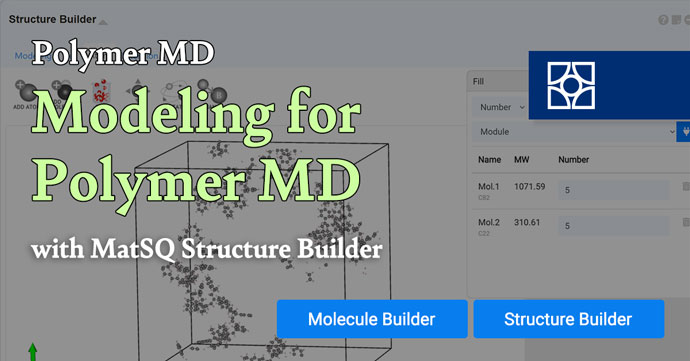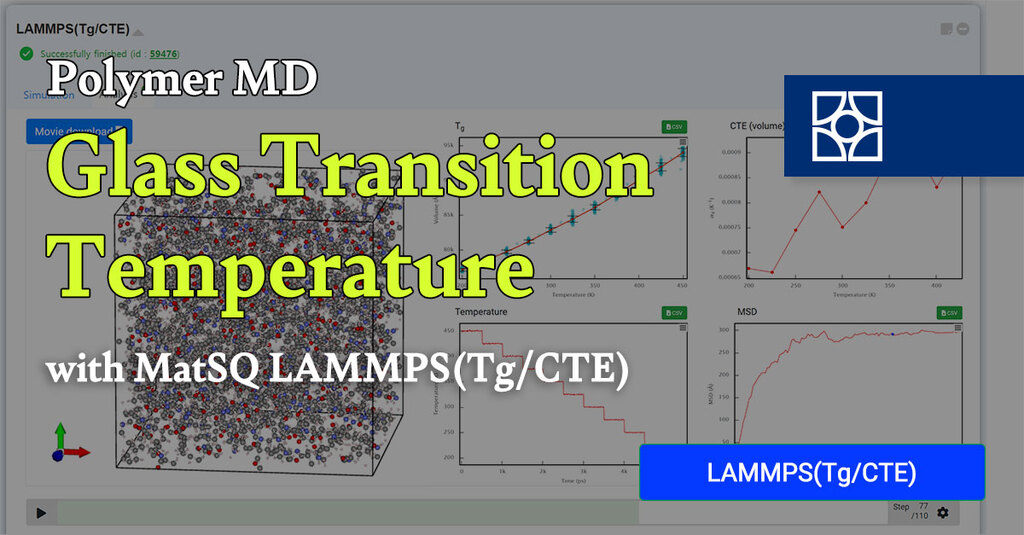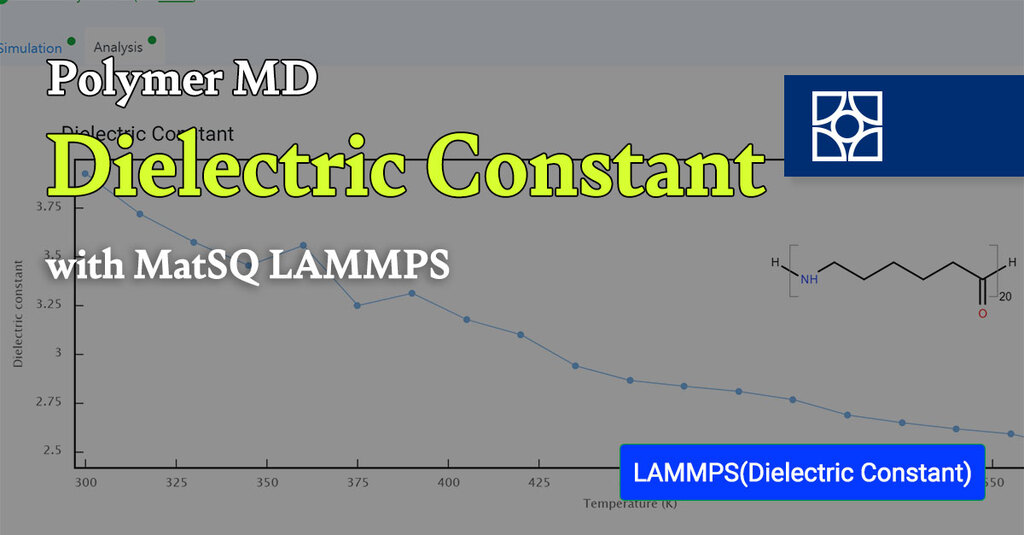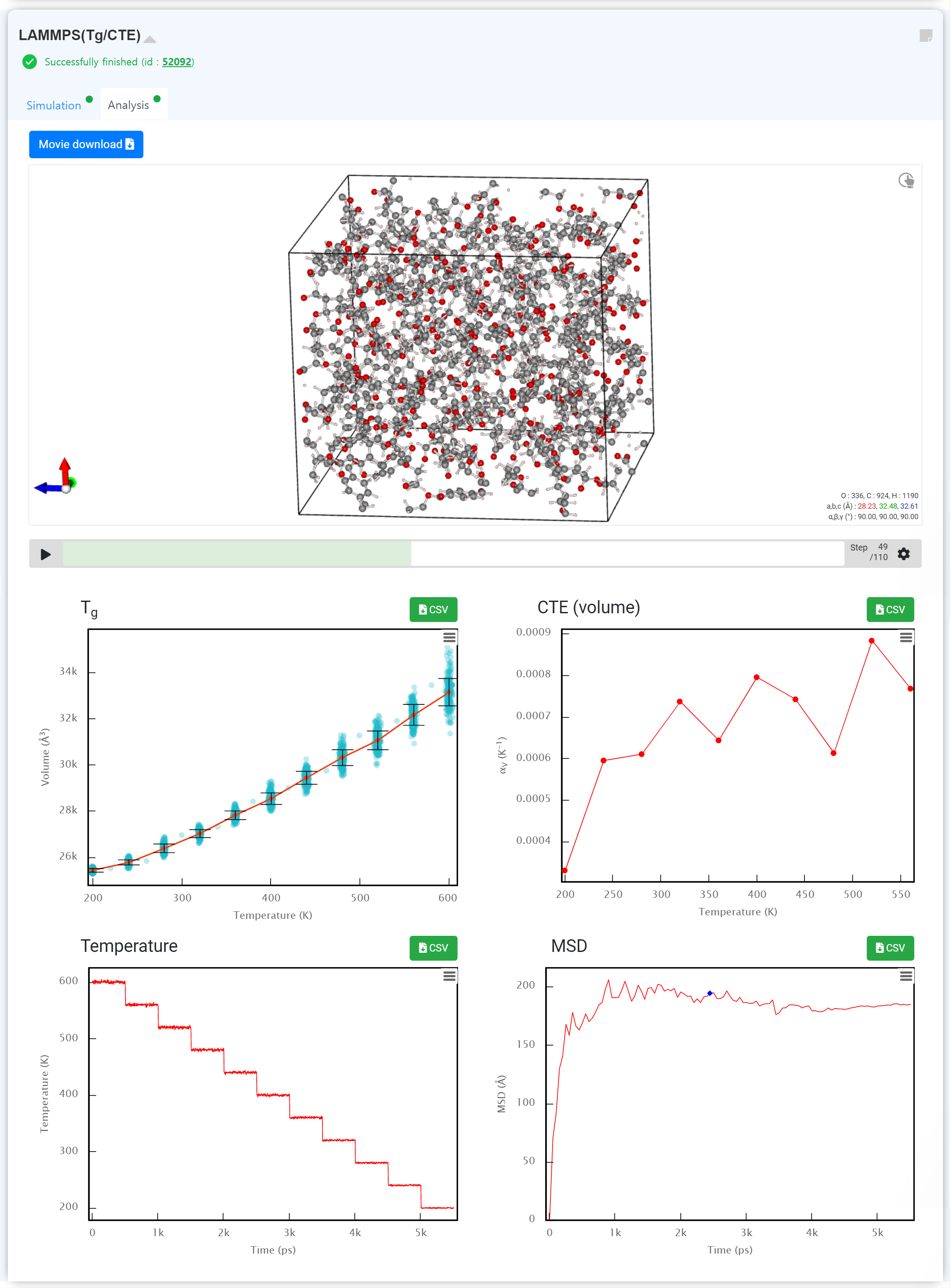
Glass Transition Temperature & Coefficient of Thermal Expansion
You can check the thermal properties of the polymer.
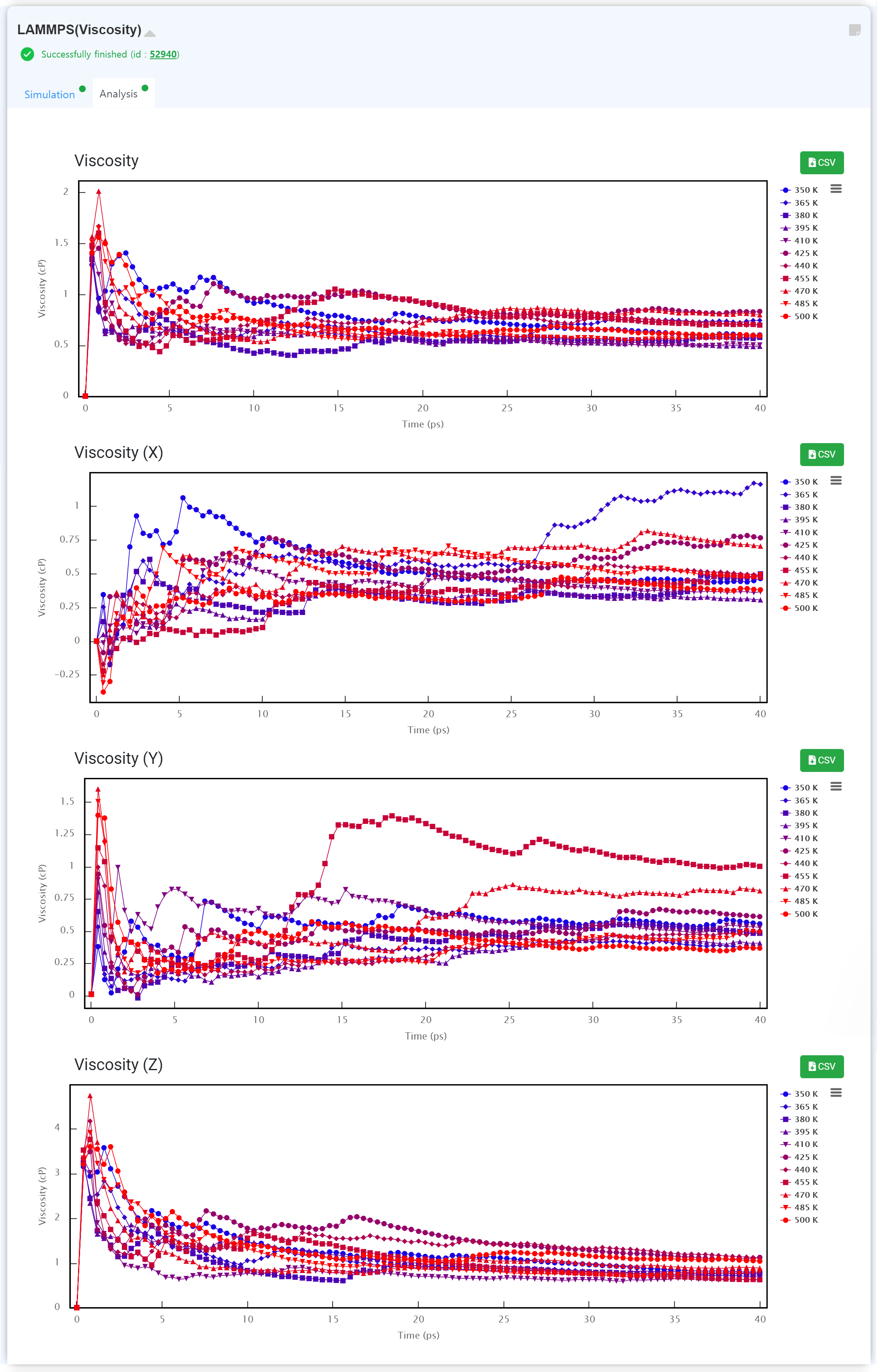
Viscosity
You can obtain the average viscosity from the equilibrium molecular dynamics calculation.
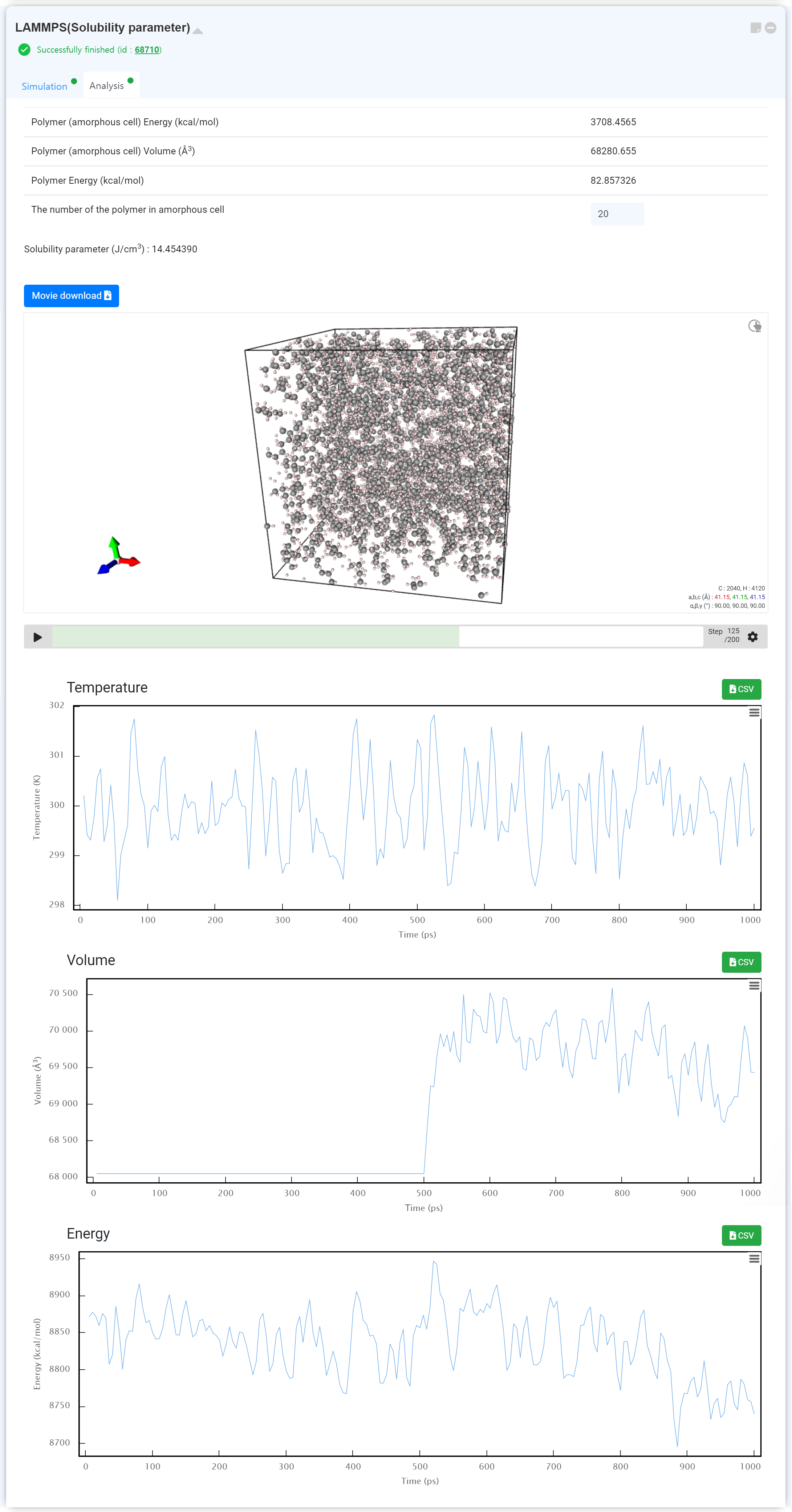
Hildebrand Solubility Parameter
You can calculate the solubility parameters of the polymer. Find the solubility parameter by changing the number of polymers in amorphous cell.
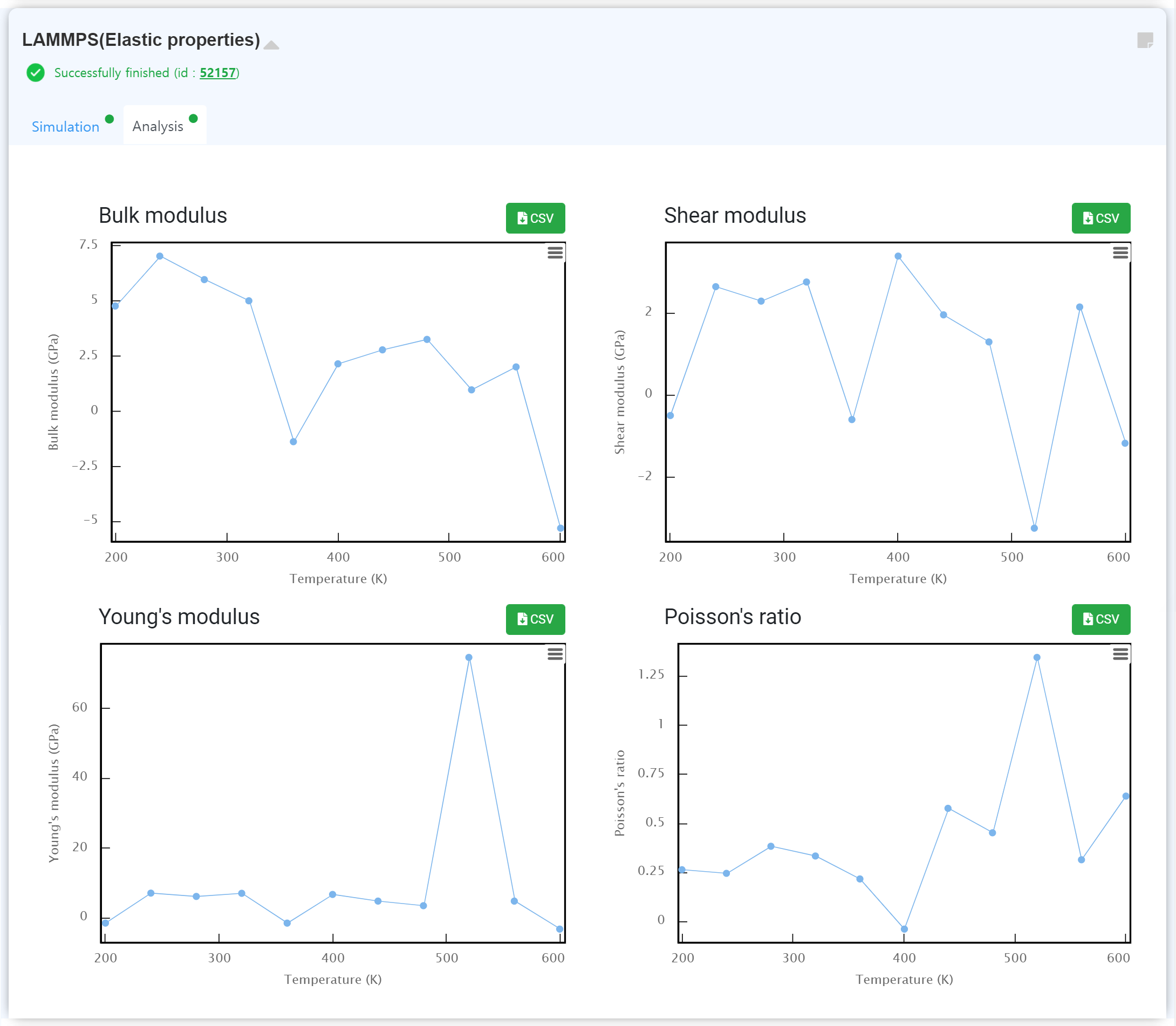
Elastic Properties
You can check the elastic properties of the polymer. The various modulus will be calculated.
To get elastic properties in MatSQ ⇢
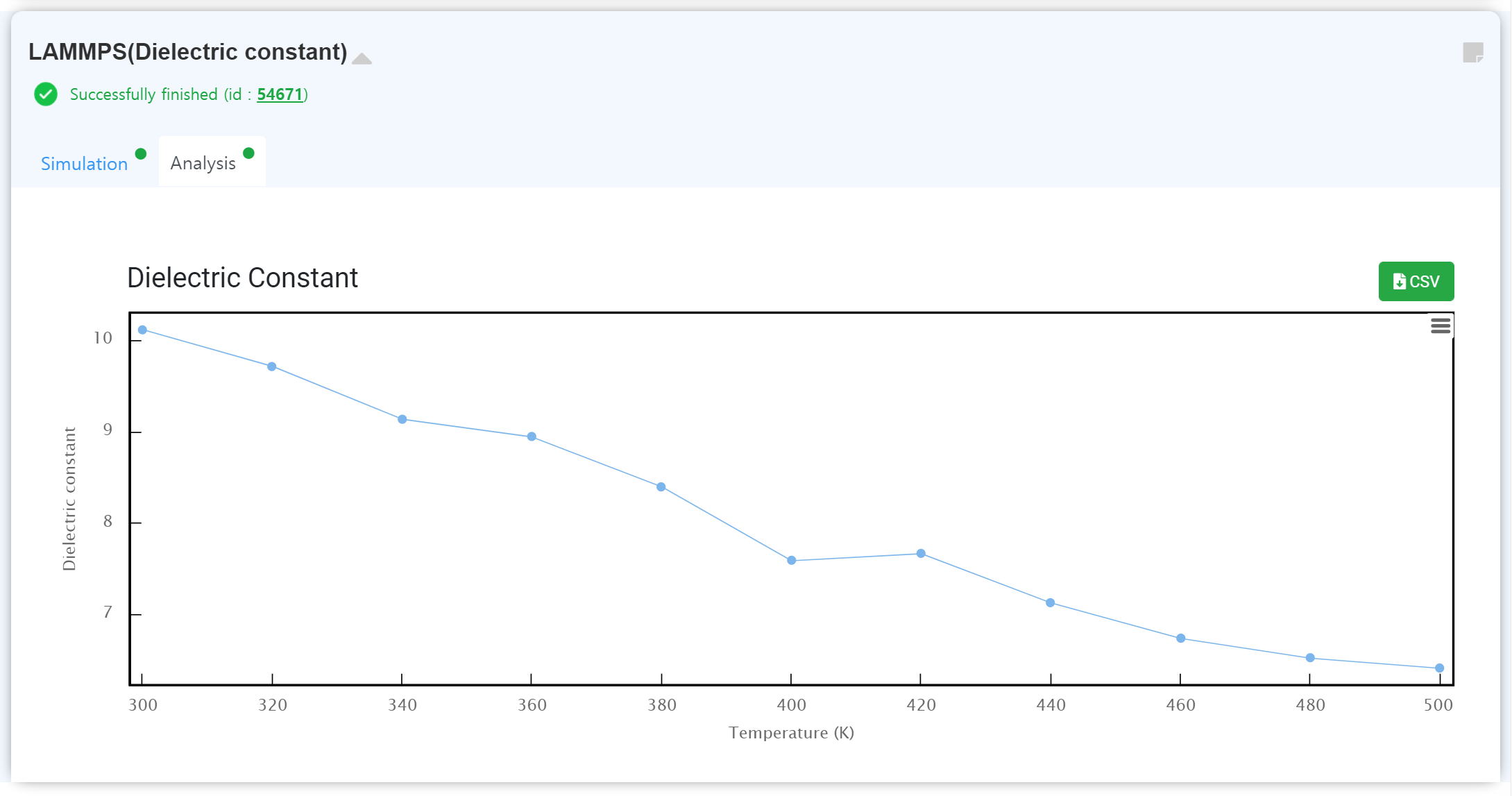
Dielectric Constant
You can get the dielectric constants depending on the temperature.

